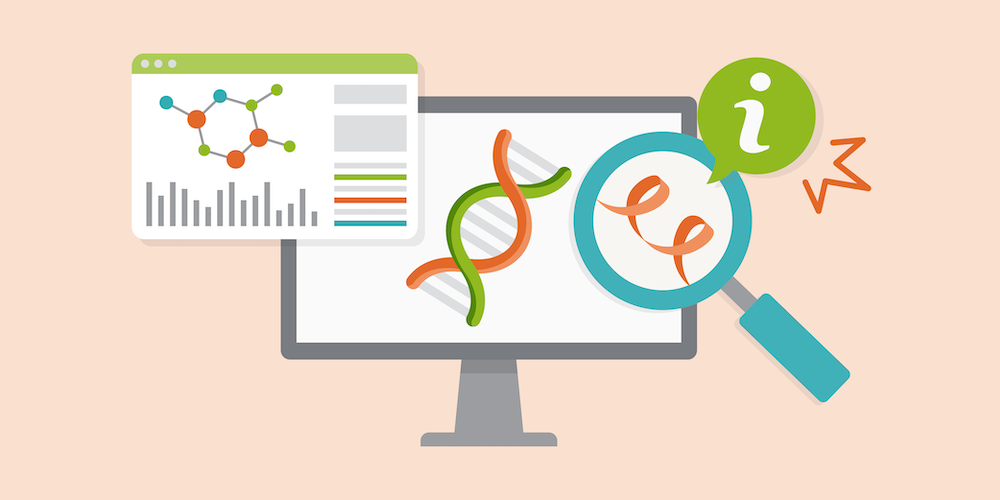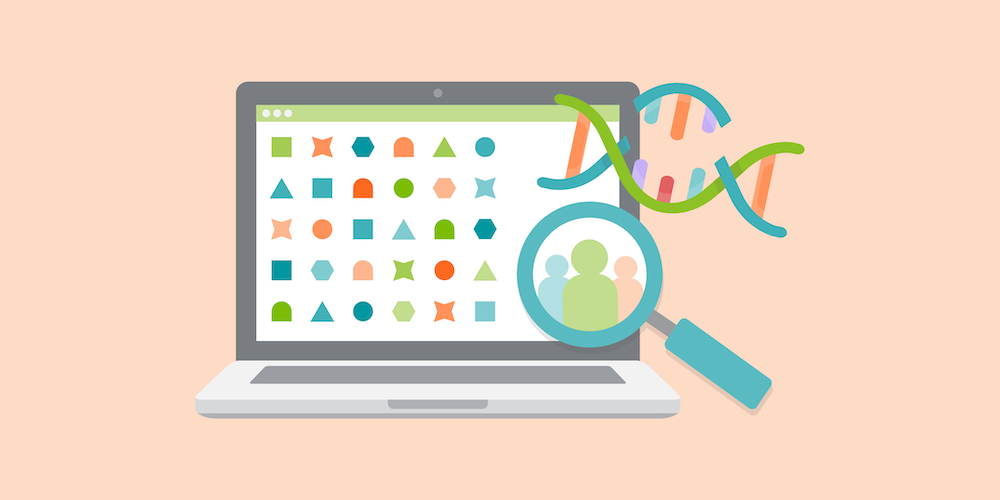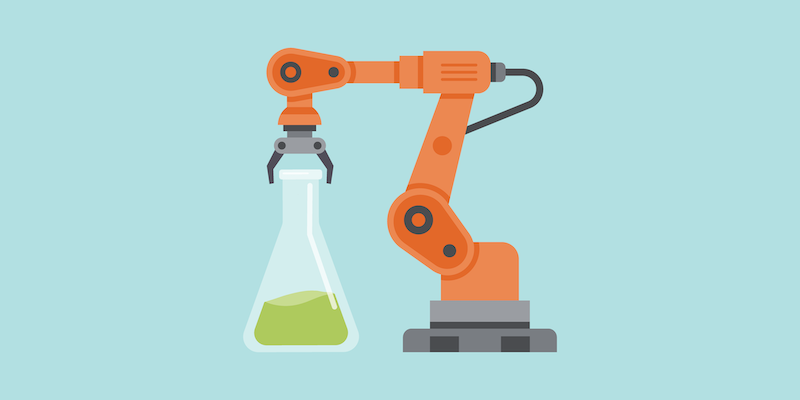Bioinformatics: Unraveling Complex Biological Data for Scientific Breakthroughs
By Caleigh Findley

There is a synergy between biology and computer science that has reimagined how scientists approach complex problems — now with greater efficiency and higher output than ever before. Computational approaches facilitate the experimental process, uncomplicate large datasets, and empower a more strategic scientific approach to treating diseases of all kinds.
Read on to learn more about the many applications of bioinformatics in research and how it has brought the life science research landscape to the next level.
Transforming raw data into knowledge
At its core, bioinformatics seeks to unravel the complexities inherent in biological systems. It acts as a translator, converting genomic output into a comprehensible narrative that researchers can interpret and act upon.
Raw biological data, be it from DNA sequencing or other omics technologies, is often akin to an intricate puzzle waiting to be solved. Bioinformatics serves as the skilled puzzle solver, converting raw data into meaningful insights. By employing algorithms for data preprocessing, quality control, and statistical analysis, bioinformaticians transform overwhelming datasets into interpretable information.
This transformative process is not merely about crunching numbers; it’s about extracting key learnings that can guide further experimentation and research. In essence, it bridges the gap between data generation and scientific understanding, ensuring that the information gleaned from experiments becomes a stepping stone toward groundbreaking discoveries.
Understanding biological processes
The right algorithm can help researchers identify key gene targets, regulatory elements, and other components of a cellular pathway that may be altered in their experimental design. This deeper understanding of biological processes has empowered many potentially transformational projects.
For instance, researchers can use the learnings gathered from big data and bioinformatics to pinpoint disease-associated genetic variations and empower precision treatment strategies. This is a particularly powerful approach in rare or poorly understood diseases where researchers need to glean more information from less sample size.
Finding patterns in the genome
Bioinformatics not only assists in deciphering the finer parts of the genome — it can also take a birds-eye view to unearth hidden patterns within the dataset. This ability to identify correlations and trends is instrumental in driving scientific advancements.
Take the datasets generated from high-throughput sequencing. A common tool in drug discovery, this approach requires a solid computational strategy to analyze the cellular pathways impacted by drug candidates in an experimental model. Distilling this information is a required part of selecting a lead compound and a critical step in evaluating its effect on the desired target.
Leading by design in drug discovery
Structure is function when it comes to proteins. That’s why having the ability to accurately predict and analyze protein structures is paramount for those scientists exploring unknown territory in the genome.
Filling in the gaps with 3D models
Computational approaches like homology modeling can help unveil the 3D architecture of a target protein from its DNA sequence and the 3D structure of a similar protein. Once the model is validated, it can uncover actionable information like identifying binding sites on a protein and facilitating the design of an associated ligand. If a researcher wants to target a novel receptor, they can model the structure and develop compounds that will interact with the receptor’s binding sites, with the goal of altering its function.
Simulating protein interactions
Understanding the nuances of protein interactions is crucial for drug discovery, as it allows scientists to predict potential drug-target interactions and assess the efficacy of various compounds. Molecular dynamics simulations, in particular, enable the visualization of how proteins move and change over time, offering a dynamic perspective that static models may lack.
This in silico approach to studying protein interactions not only accelerates the drug discovery process but also minimizes the need for extensive experimental trials. It empowers researchers to make informed decisions about which compounds are most likely to succeed, streamlining the design and optimization of potential therapeutic agents.
Leading by design involves leveraging these computational tools to predict, analyze, and optimize protein structures and interactions. This proactive approach not only enhances the efficiency of the drug development pipeline but also increases the likelihood of identifying novel and effective treatments for a range of diseases.
As we continue to delve deeper into the mysteries of life, bioinformatics will remain an indispensable tool, guiding researchers toward new frontiers in medicine, genetics, and beyond. Its ability to transform raw biological data into actionable knowledge underscores its significance in shaping the future of scientific discovery. In the intricate dance between molecules and algorithms, bioinformatics orchestrates a symphony of understanding that resonates across the scientific community, driving us closer to unlocking the secrets of life itself.






